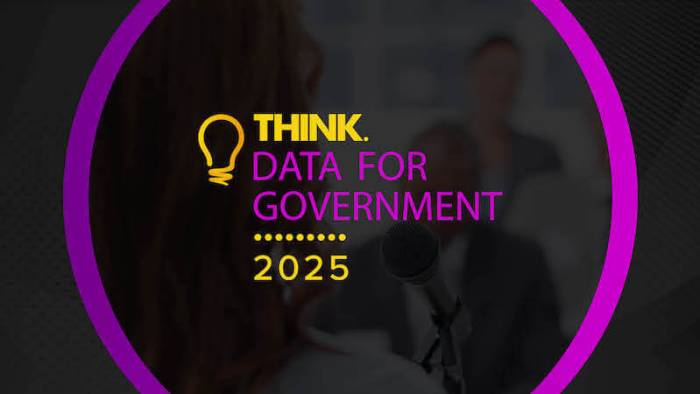As governments worldwide grapple with the twin pressures of technological change and rising public expectations, digital transformation has evolved beyond speed and efficiency. Here, Amanda Payne, Government Services Director at GAIN, shares her insights on how the public sector can design digital services that are ethical, human-centred, and truly work for everyone.
Q: The digital government landscape is evolving rapidly – from AI integration to new approaches to service design. From your perspective, what are the most significant shifts happening right now in how governments are approaching digital transformation?

The most significant shift is from transactional service delivery to mission-driven, outcome-focused government. We’re already in the age of AI, and the public sector must leverage AI and data sharing to deliver joined-up, personalised services.
But this also brings urgent challenges in digital inclusion, privacy, ethics, legacy technology and skills gaps. Progress depends on moving beyond channel shift and cost savings to put citizen journeys and measurable societal outcomes at the heart of transformation. It’s about reimagining how government sees, understands, and designs for people – that’s what will make digital government truly resilient.
Q: Many governments are moving from service delivery models focused on transactions to designing around life events and journeys. What does it take to make that shift meaningful for citizens?
Service redesign demands interoperable platforms, shared data standards, and collaboration across agencies, sectors, and communities. The real change is cultural: organisations must map services to user journeys – like having a child or retiring – rather than departmental boundaries, embedding inclusion, privacy, and user needs from the start.
Collaboration across public, private, and third sectors is vital, as is a mindset shift from compliance to a holistic focus on citizen experience. Privacy and digital inclusion should be engineered in from the outset, becoming organisational priorities rather than afterthoughts.
Q: AI offers huge potential to amplify government capacity, but it also raises questions of trust and human connection. How can governments use AI responsibly while keeping human-centred design at the heart of public service?
AI should extend government capacity but must be anchored in ethical design, explainability, and accessibility. It can amplify efficiency and reach – but risks scaling bias or reducing transparency if not guided by human oversight.
Co-design with affected communities, ethical-by-default frameworks, and continuous human involvement are essential to maintain accountability and fairness. The Government Service Standard, which puts users at the centre of digital services, provides a framework for viewing AI projects as service design challenges – not just technical ones. The goal shouldn’t be to automate citizens (or civil servants) out of the process, but to make AI an enabler of more human, inclusive services.
Q: As emerging technologies reshape service delivery, what kinds of skills, leadership, and structures do public sector organisations need to stay adaptive, ethical, and people-focused?

Lasting transformation is driven by multidisciplinary teams, digital leadership as a central strategic function, and continuous investment in skills – especially in AI, security and service design.
Building capability should focus on culture change, hybrid public–private collaboration, and agile, empowered delivery models that learn and adapt continuously. Leadership must make digital a core strategic priority, supported by in-house expertise and partnerships that close current skills gaps.
If you liked this content…
Q: How can governments design services that remain accessible and usable as populations, technologies, and user expectations continue to change?
Inclusion goes beyond technical compliance – it must anticipate new forms of exclusion, such as AI interfaces or language bias. Accessible design should consider literacy, connectivity and behavioural insights, not just technical standards.
At GAIN, we’ve seen that embedding accessibility and inclusive research from the outset, listening to marginalised groups, and iterative testing ensures services remain relevant and usable for all. Measuring inclusion as a key maturity indicator can shift accessibility from a “tick-box” exercise to a foundational design principle.
Q: Trust isn’t built through technology alone – what practices or principles help governments sustain public confidence in digital systems and services?
Trust is rooted in transparency, accountability and participation. Citizens must know their data, identity and outcomes are respected.
While many digital teams have made real progress, the Blueprint for Modern Government shows that improvements have been uneven. Rebuilding trust means demonstrating progress through community engagement, opportunities for feedback, and transparent communication – not just technical fixes. A visible commitment to inclusion, especially for digitally excluded and seldom-heard groups, reinforces confidence that digital services work for everyone.
Q: Traditional digital maturity metrics often focus on technology or efficiency. What new measures could help governments track progress in areas like inclusion, trust, and user experience?
We need to move beyond traditional maturity metrics. Success should start with defining outcomes that matter – using techniques like Impact Mapping to clarify the “what,” “how,” “who,” and most importantly, “why.”
This enables teams to track outcomes such as accessibility, engagement, transparency, and real user journeys. Inclusion and trust should be measured alongside speed or cost savings, with every project improving the shared data ecosystem and outcomes for marginalised users.
Q: If you could offer one piece of advice to governments preparing for the next decade of digital transformation, what would it be?
Make transformation cultural, not just technological. Equip teams to learn from users, commit to transparency, and embed inclusion and trust as core success measures.
Digital innovation should be used as a lens to fundamentally improve lives – not just deliver transactions. Every digital service is an opportunity to advance shared data, skills and public confidence for the future.








